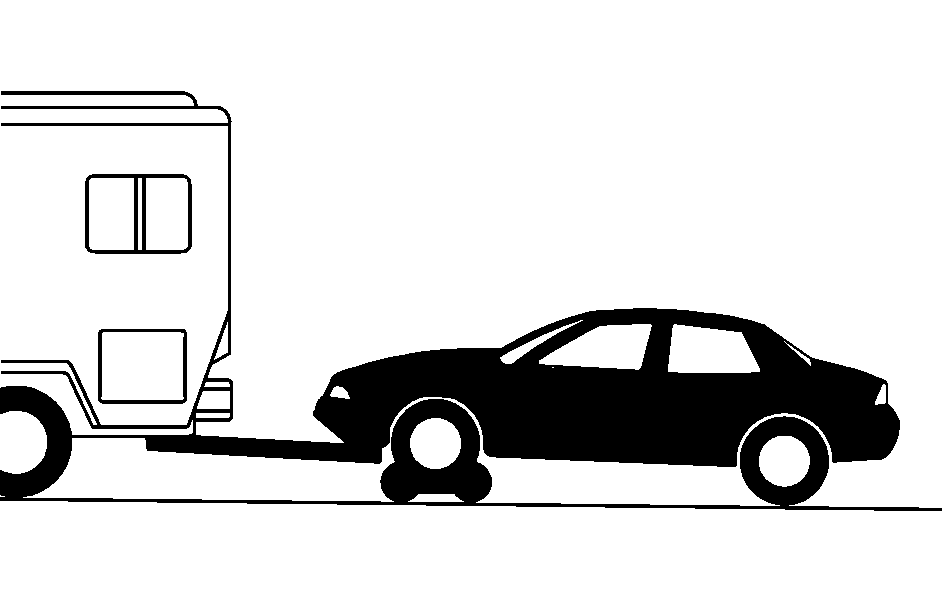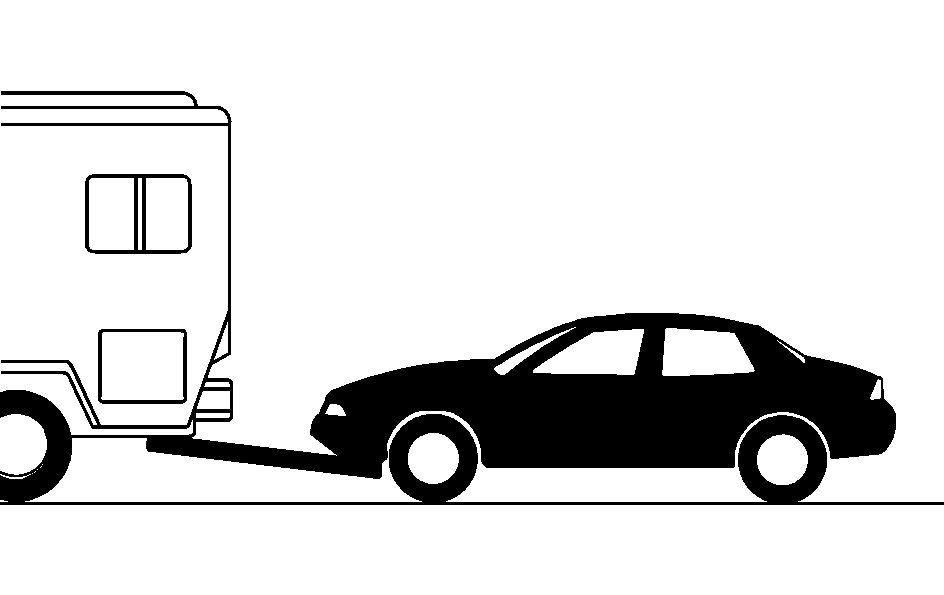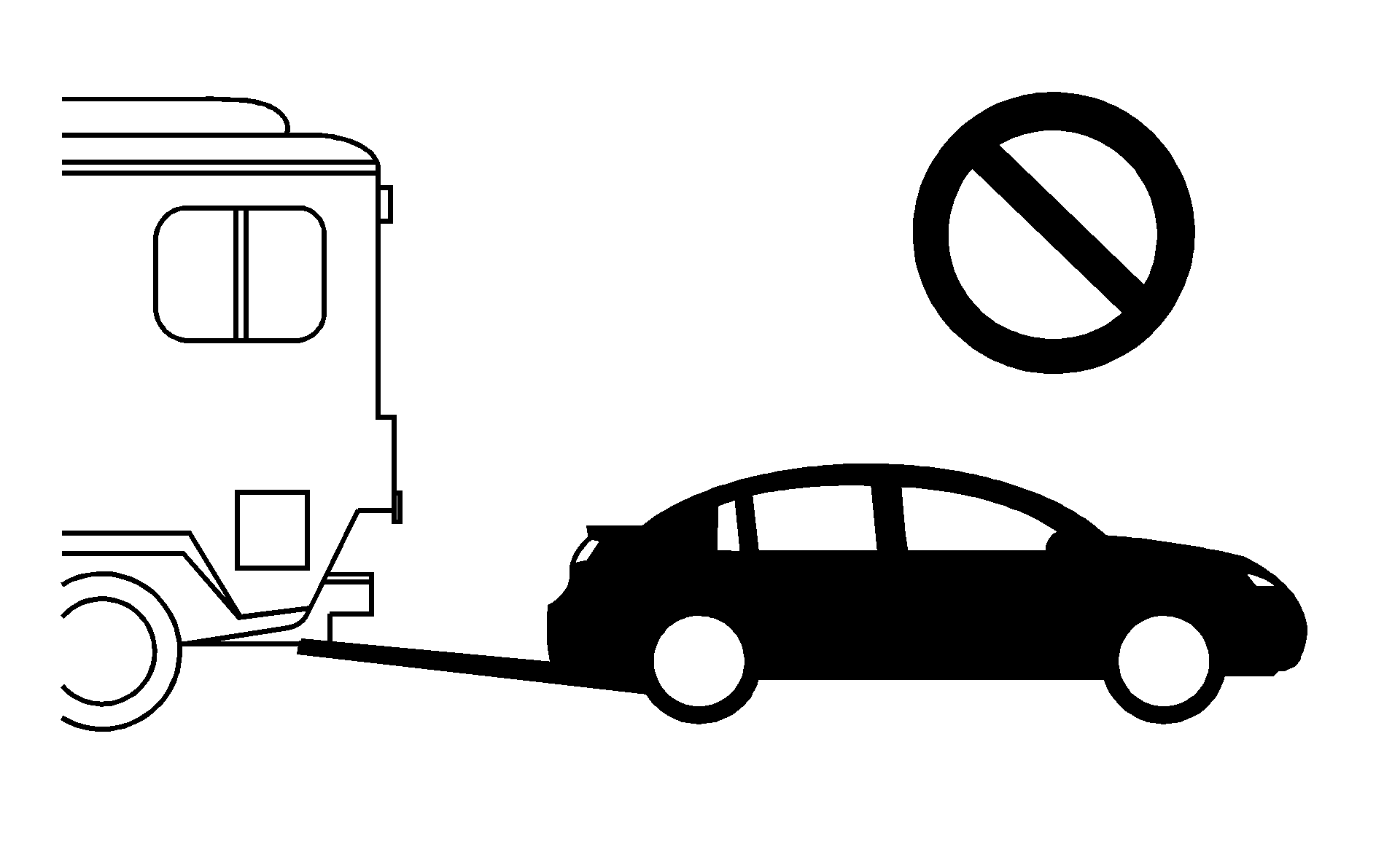Recreational vehicle towing means towing your vehicle behind another vehicle - such as behind a motorhome. The two most common types of recreational vehicle towing are known as "dinghy towing" (towing your vehicle with all four wheels on the ground) and "dolly towing" (towing your vehicle with two wheels on the ground and two wheels up on a device known as a "dolly").
With the proper preparation and equipment, many vehicles can be towed in these ways. See "Dinghy Towing" and "Dolly Towing" following in this section.
Powertrain Combination and Towing Methods | Front Wheels on a Tow Dolly | All Four Wheels on the Ground | Rear Wheels on a Tow Dolly |
|---|---|---|---|
Manual Trans | Yes | Yes | No |
ViTi Variable Trans | Yes | No | No |
Five Speed Auto Trans | Yes | No* | No |
* Towing with all four wheels on the ground is limited to 62 miles (100 km) at 50 mph (80 km/h). This is for disabled towing only.
Here are some important things to consider before you do recreational vehicle towing:
| • | What's the towing capacity of the towing vehicle? Be sure you read the tow vehicle manufacturer's recommendations. |
| • | How far will you tow? Some vehicles have restrictions on how far and how long they can tow. |
| • | Do you have the proper towing equipment? See your dealer or trailering professional for additional advice and equipment recommendations. |
| • | Is your vehicle ready to be towed? Just as you would prepare your vehicle for a long trip, you'll want to make sure your vehicle is prepared to be towed. See Before Leaving on a Long Trip . |
Dinghy Towing (Five-Speed Automatic Transaxle and VTi Variable Transaxle)
Your vehicle was not designed to be towed with all four wheels on the ground. Your vehicle may be towed from the front with two of its wheels on the ground, or with car carrier equipment. See "Dolly Towing" later in this section.
Dolly Towing (All Transaxles)

To tow your vehicle with a dolly, do follow these steps:
- Put the front wheels on a dolly.
- Move the shift lever on your manual transmission to SECOND (2). Move the shift lever on your VTi variable transaxle (if equipped) or five-speed automatic transaxle to PARK (P).
- Set the parking brake and then remove the key.
- Clamp the steering wheel in a straight-ahead position with a clamping device designed for towing.
- Release the parking brake.
Dinghy Towing (Manual Transaxles)

To tow your vehicle will all four wheels on the ground, follow these steps:
- Set the parking brake.
- Turn the ignition key to ACC.
- Shift your transaxle to NEUTRAL (N).
- Open the lid of the underhood fuse block (UHFB) and remove the IP BATT2 40-amp fuse. Refer to the underside of the UHFB cover for specific fuse location.
- Close the lid of the UHFB and store the fuse.
- Close the hood.
- Release the parking brake.

Notice: Too much or too little fluid can damage the transmission. Be sure that the transmission fluid is at the proper level before towing with all four wheels on the ground.
Notice: Do not tow a vehicle with the front drive wheels on the ground if one of the front tires is a compact spare tire. Towing with two different tire sizes on the front of the vehicle can cause severe damage to the transmission.
If you are towing your vehicle forward with all four wheels on the ground, the transmission and tire maintenance should be scheduled by mileage accumulation through both driving and towing, not to driven (odometer) mileage.
Tire wear will reflect actual "rolling" mileage and may be greater than expected for the current odometer mileage.
Note: When towing your vehicle with all four wheels on the ground, the vehicle's odometer will not record the miles generated while towing.
Once you have reached your destination, follow these steps:
- Set the parking brake.
- Shift the transmission to "1" (First Gear).
- Turn the ignition key to "OFF/LOCK" position. Remove the key from the ignition.
- Open the hood.
- Retrieve the fuse from its stored location.
- Open the lid of the underhood fuse block (UHFB) and replace the IP BATT2 40-amp fuse. Refer to the underside of the UHFB cover for specific fuse location.
Towing speeds should not exceed the legally posted speed limit or 65 mph (105 km/h) maximum. In the event that you need to use the spare tire in place of one of the front tires, rotate a rear tire to the front and install the compact spare tire in the rear of the vehicle.
Towing Your Vehicle from the Rear

Do not tow your vehicle from the rear. Your vehicle could be badly damaged and the repairs would not be covered by your warranty.
